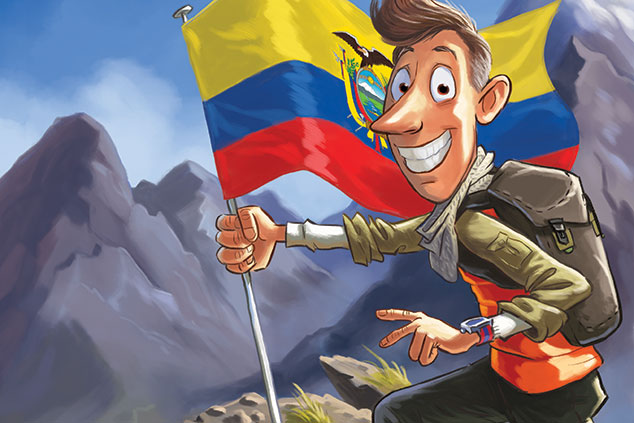
Ecuador is finally set to cash in on its vast metals deposits. The domestic political backdrop has stabilised and international investors are beginning to take note, says James McKeigue.
Ecuador is the biggest anomaly in international mining. It sits plum in the middle of the rich metallic belt that runs along the Andes mountain range, where other countries, such as Chile, Peru and Colombia, have built world-class mining industries. Yet until this year Ecuador didn’t have a single large-scale mine.
Over the last decade more gold and copper have been found in Ecuador than anywhere else on earth. But as so often in this industry, the risks above ground outweighed the riches below it. Political and economic factors prevented the development of a modern mining sector. But as its neighbours grew rich from mining, it became harder for Ecuador to ignore its rich reserves of copper, gold, and silver. In the last few years the country has opened up to mining. That’s led to a modern-day gold rush, with 12 of the world’s largest mining companies setting up offices in Ecuador and the country’s first two large-scale mines – one copper, one gold – entering production this year.
I first wrote about Ecuador’s mining sector for MoneyWeek in 2013. But then there was no way for private investors to gain direct exposure to the story. Now there is (see below).
Ecuador: a potential world-beater
You won’t find Ecuador in any of the global top rankings for metals production and reserves. The United States Geological Service (USGS), which has excellent data on international mining, doesn’t rank Ecuador in its top ten for gold, copper or silver. The reason, as the USGS readily admits, is that only about 10% of Ecuador has been explored for mining. But even that small amount of surveying has been enough to yield some major discoveries. In 2006 Canadian miner Kinross found Fruta del Norte, home to around five million ounces of gold and six million ounces of silver. Then in 2012 SolGold discovered Alpala, a deposit that grows with each new drilling campaign and currently has inferred resources of 2.5 million tonnes of copper and 3.8 million ounces of gold. To give you some idea of the scale of the discovery, if fully developed it could become the largest underground silver, third-largest gold and sixth-largest copper mine in the world.
The big names rush in
These discoveries have tempted some of the biggest names in mining into the Ecuadorian gold rush. BHP, Newcrest Mining, Anglo American, First Quantum Minerals and Fortescue Metals Group are among those that have acquired stakes in smaller Ecuador-focused exploration firms. Indeed, 12 of the world’s biggest mining firms have bought in to Ecuadorian projects or set up offices there in recent years.
The strange thing about today’s Ecuadorian gold rush is that people have always believed it has lots of gold, copper and silver. Ecuador sits on the Andean copper belt, which is responsible for almost half the world’s copper production. And gold has been mined since the 15th century. Yellow metal mined from the south of modern-day Ecuador, in a province that is now called El Oro, was turned into intricate religious and ceremonial jewellery prized by the Incan ruling class. Yet despite half-hearted attempts by the Spanish and then other international investors after Ecuador’s independence in the 19th century, the country never fostered the type of large-scale mining industry that arose in other South American countries.
Subscribers can read it in the digital edition or app